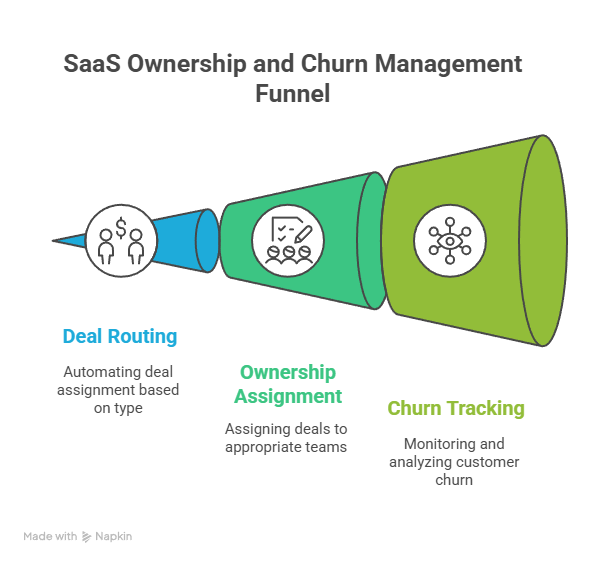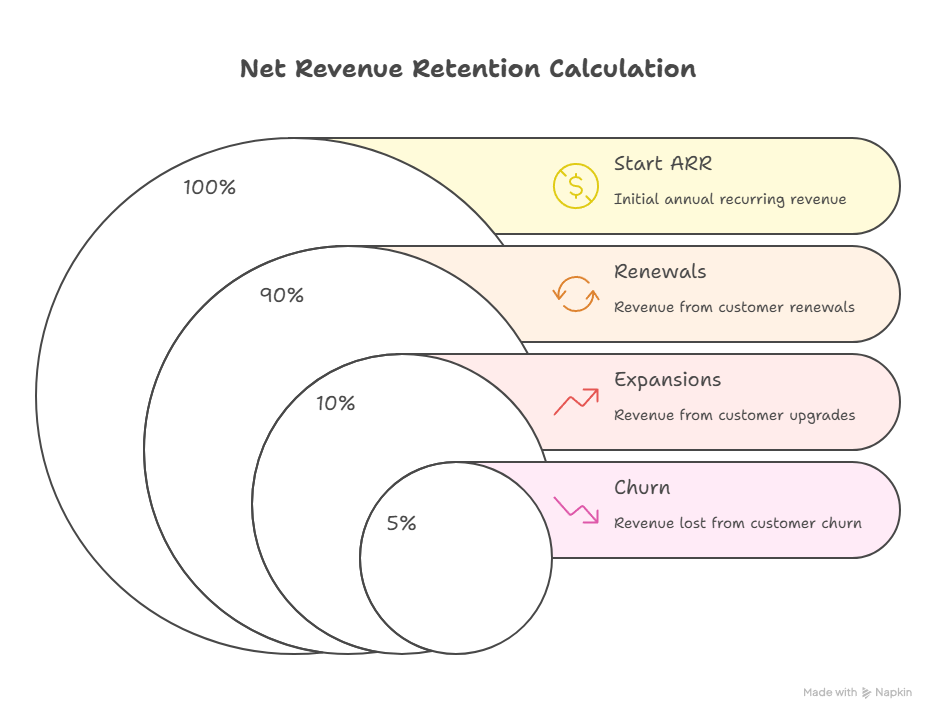

Most SaaS teams nail new business tracking in HubSpot. However, where things fall apart is growth revenue: renewals, expansions, and churn.
1. Renewal deals get skipped or tracked inconsistently.
2. Expansions get buried inside old deals (or worse, not tracked at all).
3. Churn disappears because nobody standardizes how to log it.
The result? Messy pipelines and no real visibility into Net Revenue Retention (NRR), the metric every investor asks about.
Here’s how to set up HubSpot so renewals and expansions are tracked cleanly, and you always have a clear picture of growth. It builds directly on the structure outlined in our SaaS HubSpot Operating System to ensure every deal type flows cleanly through the CRM.

Renewals deserve their own deals. Why? Because they:
Simple rule:
This keeps renewals visible and measurable, instead of buried.
Not every revenue change needs a new deal. Here’s the split:
This way, your reports show ARR growth without cluttering your pipeline with noise.
Ownership usually depends on company stage:
👉 Use Deal Type (New Business, Renewal, Expansion) and automation to route deals to the right owner. That way, reporting stays consistent no matter who closes the deal. You can also align this logic with the BDR to AE Handoff Guide to ensure seamless ownership transitions across your entire funnel.
Most SaaS teams drop the ball here. To track churn cleanly:
Without this, churn data vanishes, and you lose one of your most valuable feedback loops.

There are two common ways to track renewals and expansions:
Pick the one that matches your growth stage. Early on, Companies are enough. Later, a CS object gives you flexibility.
Don’t rely on reps to remember everything. Automate key steps:
Automation means tracking works even if reps forget.
With this setup, you can split revenue into:
From there, you can calculate:
That gives you investor-grade metrics without adding more tools. For more clarity on building reliable attribution and ARR accuracy, check out our Lead Source Attribution Setup Guide.

In PLG motions, expansions often happen without sales. Don’t skip them:
Growth isn’t just deals. It’s also health. Set up properties like:
These give CS leaders visibility into proactive engagement, not just renewals and churn.
Renewals and expansions drive SaaS growth, but most HubSpot setups only track new business. The fix is simple rules:
Get this right, and you’ll finally have clear visibility into GRR and NRR inside HubSpot — the numbers that prove SaaS growth.
👉 Want to see how this would look in your HubSpot?